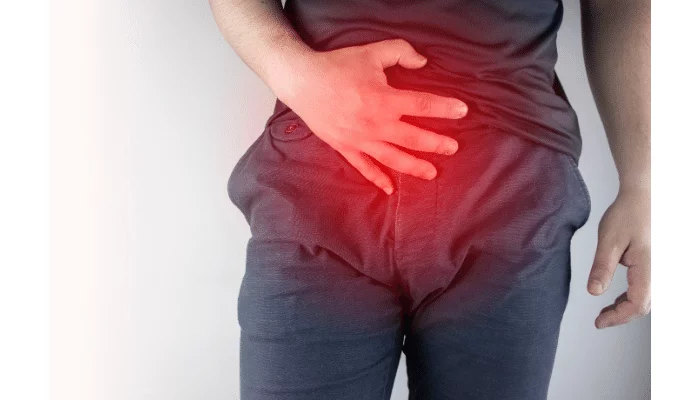A hernia is where part of the body (an organ or a piece of tissue) protrudes through a defect (usually in a muscle) and often causes a lump. Groin hernias include inguinal and femoral hernias. We deal with both of these and specialise in recurrent groin hernias.
Inguinal hernias arise from a weakness in the abdominal muscle wall where blood vessels and the spermatic cord in men pass from inside the abdomen down into the scrotum or a ligament from the ovary in women. Femoral hernias arise from a weakness in an area where the central vein (femoral vein) drains blood from the thigh into the body. Both inguinal and femoral hernias can produce a lump in the groin that may protrude permanently or intermittently through coughing or straining. Groin hernias can contain either fat, bowel or bladder. They may not cause any symptoms or just mild to moderate discomfort when the hernia pushes out. Occasionally they can cause severe constant pain, which is a medical emergency.
We assess lumps in the groin in our clinic with a thorough history and clinical examination. Sometimes, an ultrasound scan, CT scan or MRI scan is required to clarify the anatomy of the hernia and ensure that there is no other cause for the lump. Once the diagnosis has been established, your surgeon can go through the treatment options with you. If you do not wish to have the hernia repaired, we can discuss how best to manage your symptoms without the need for surgery.
Surgical repair of groin hernia is undertaken as either an open operation with a small cut in the groin over the lump or using a keyhole (laparoscopic) technique. Both techniques require the use of a mesh (synthetic material used to strengthen and cover the weakness in the muscle). These operations are performed as day case procedures, and most patients will go home on the same day without any problems.

Abdominal Wall Hernias
We also specialise in other abdominal wall hernias. These include umbilical hernias of the belly button, epigastric hernias at the top of the abdomen and incisional hernias from previous surgery.
Abdominal wall hernias often present as pain or a lump that you can feel on your abdomen that sometimes goes in and out. As with groin hernias, your surgeon will take a careful clinical assessment of your abdominal wall. If required, further scans such as ultrasound, CT or MRI may be necessary to assess the anatomy of the hernia.
Surgical repair includes either an open or keyhole (laparoscopic) approach depending on the type of hernia you have. Some hernias can be repaired with simple sutures to close the defect in the muscle, where others require mesh to fix them. Most abdominal wall hernias can be performed as a day case operation.
